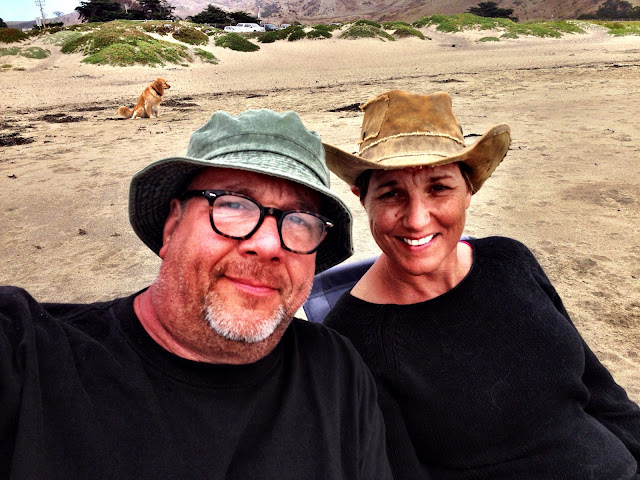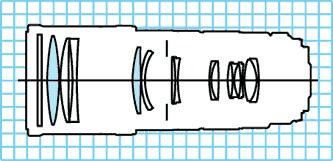Having a steady diet of medium format cameras from Hasselblad to Mamiya, shooting anything less felt like I wasn't taking the craft seriously. Shooting in 35mm I felt compensated a bit with the heft of a pair of Nikon F3s and an array of fixed focal length lenses. Neither format suited well the glove box or tank bag. They seem to prefer (or how I justified it given the investment) Pelican cases and Magliners to get there.
But as the saying goes, the best camera is the one you have with you. An imaging generation ago that meant an Olympus XA, the size and shape of a two-week old bar of Irish Spring that shot 35mm loads with a 2.8 aperture and 35mm focal length. Images were incredibly sharp with Zuiko ground glass in arguably the smallest full-frame 35mm camera ever made.
Today the XA's only drawbacks are you can't text nor can you pay for your Starbucks Pumpkin Spice latte with it. Okay, and you can't upload your Camera+ app-enhanced pics to Facebook either.
The sound you're about to hear is the collective exasperation of all my photographer friends when I claim that my iPhone 4 meets almost all of my needs as a photographer. And I can say that after releasing the shutter of my Canon digital SLR over ten thousand times.
Eyes are rolling.
I've been shooting my iPhone exclusively for the past five months and have learned to have it become second-nature to me as much as an extension of my mind's eye as any SLR or rangefinder before it. And I learned a few things along the way.
It's always with me.
Motorcycle, kayak, road bike, trail, ocean, tarmac. I don't need rain gear, a military grade impact case or a Gitzo, though I have pressed my luck a time or two with the elements. Regardless, it's always with me.
When you're living off of a sixteen-foot kayak, space and convenience trump pixels and fast lenses, so I left the camera gear behind on our latest Glen Canyon excursion (felt like leaving a loved one behind) and tucked the iPhone into my porous day bag to be easily retrieved along the way.
The bag took the brunt of paddle drips and splashes and had I swamped the craft I'd be sunk, or rather the iPhone would be. But risks averted, the Swiss-army camera captured highlight and shadow detail-rich images. Granted, full sun certainly helps the 1/3.2, five mega pixel sensor.
Update - This is from an iPhone 5, eight mega pixel sensor.
It waits for me.
Release the shutter on any camera and you wait, albeit unmeasurable by your second-hand. A mirror has to fold up, a shutter has to move our of the way and emulsion has to be exposed while you wait. The iPhone waits for me to remove my shutter-releasing digit from its button, allowing tighter anticipation times, pre-focus and exposure. Anyone who's ever shot a child or dog in action knows the frustration of shutter release lag.
Annie loves to hang out at the ranch. She has this perpetual sloppy dog-grin unaffected by manure and flies. I wanted to grab that, controlling the precise time to release the shutter, so I held on until I managed the frame into the proximity that would exaggerate her smile... and released.
This is by far her favorite picture.
This also requires the photographer to hold the iPhone with both hands, increasing stability and reducing propensity to drop the device amongst the road apples.
Photo-bombed by my own dog.
It gets me close.
If you have a discerning eye and can do math (leaving out most COMM students) you know darn well the macro-esque lasagna shot above has been digitally tweaked. If not, though, you just might want a bite of this multi-layered sensation thanks to the Camera+ app from Tap, Tap, Tap.
The iPhone lets you close but it's Camera+'s tools that let you get intimate. For this shot I used Clarity that pulls detail out of both highlights and shadows and bumps chroma and crushes blacks enough create amazing contrast and color saturation without looking processed. This feature alone is worth the $1.99 iTunes charge for the Camera+ application. I also used the Miniturize effect to produce the shallow depth-of-field illusion.
This is the same image without the Camera+ tweaks:
Another tool in Camera+'s box is a floating auto-focus and exposure lock icon on the rule of thirds grid in its interface. Tap and drag to fix focus in a certain area, tap again to break out the spot exposure and drag it into shadows to punch the highlights and vice/versa, and voila. Try doing that with the ground glass on your Blad.
Update with iPhone 5. Less grain, crisp in contrast and detail, surprising depth.
It shoots from the hip.
The iPhone is as inconspicuous as high tech devices get, allowing the focal plane to go beyond the eyeline. High, low, canted introduce perspectives beyond the 5'6" syndrome and when eye is away from the frame in composing, you develop a sense of proximity and frame through lots of practice, and your pics turn out like a box of chocolates.
You never know what you're gonna get.
I had both iPhone and digital SLR slung over my shoulder at the WomenRock Triathlon. I have a terrific 10-22 short zoom that allows me to shoot seemingly indiscriminately and still end up with a usable take. The iPhone's 3.85mm focal length, the same as almost 30mm for thirty five, promotes the same freedom of perspective while ensuring inclusion of content. So while aiming for the number plaque on my wife's road bike and hoping I got the background for context, I was rewarded with this mix.
And I was lucky.
It begs the frame.
Zoom lenses are handy, but they're spoilers more so. If you don't like what the frame is giving, rotate the barrel and change your focal length. You don't have to move to get the composition, compromising truer compositional forces along the way.
Any fixed focal range finder makes you move, closer, father, higher, lower to get the frame where your discerning eye sees the golden mean, the power of line, the gestalt of context, but you're still limited to that tiny little parallax-corrected view finder.
The iPhone has a hella big view finder in 5:4 freeing up the eye to move as if it would on the print, recognizing, at least for my eye, new combinations of principled composition with avant garde influences. I think that means that it makes it easier to bend if not break a few compositional rules.
It also allows the eye to see in shadows and highlights, recognize the influence of texture, pulling something interesting out of what the naked eye might see as mundane.
Update, iPhone 5.
Yes, I know. I can't blow these up huge and the resolution isn't commercial, and its sensor is no better than middle-of-the-road point-and-shoots. But I can shoot, edit, and post from my palm faster than you can say Hasselblad-Mamiya-Nikon-Olympus-Pelican-Magliners.
Almost.













































